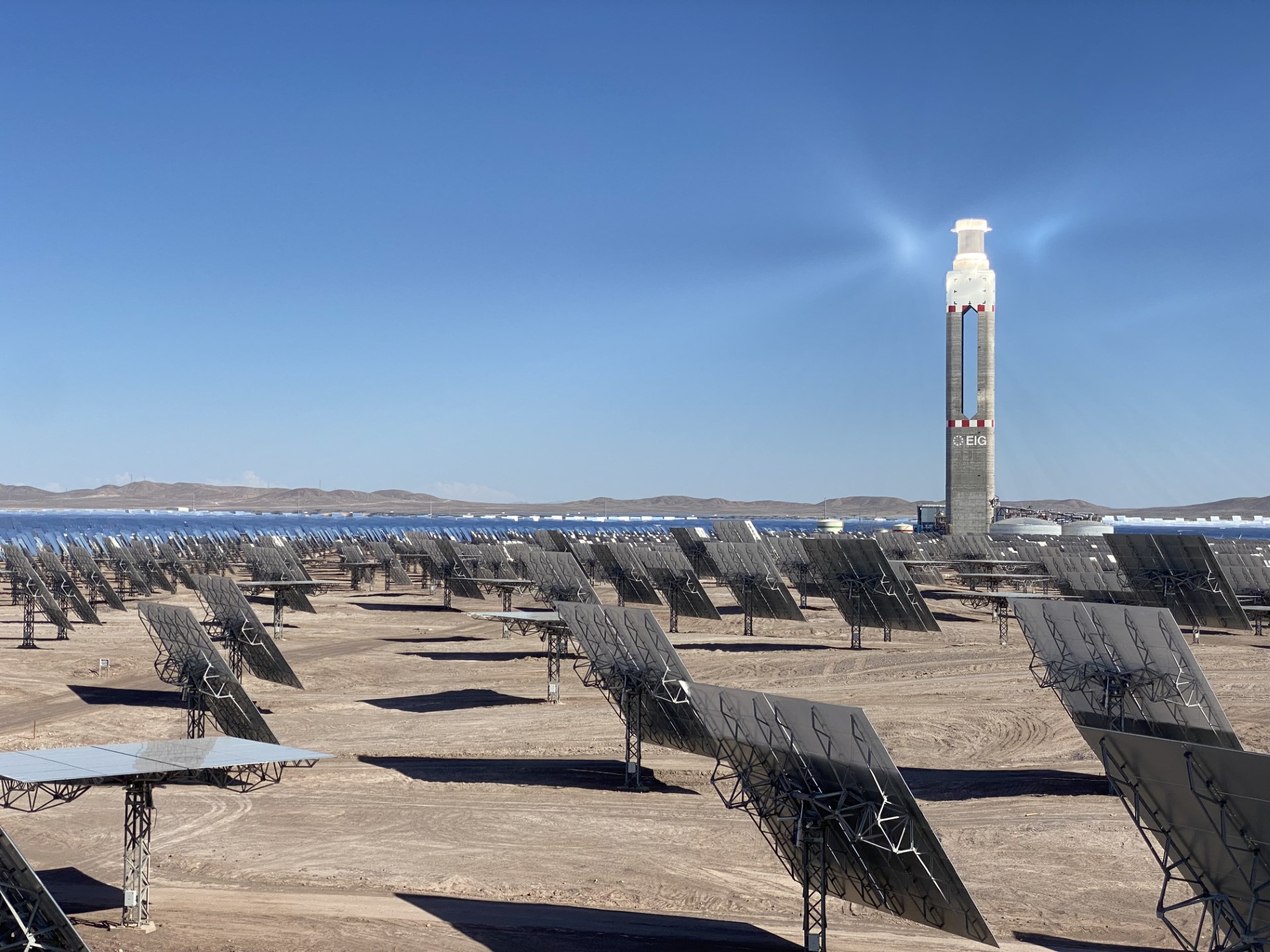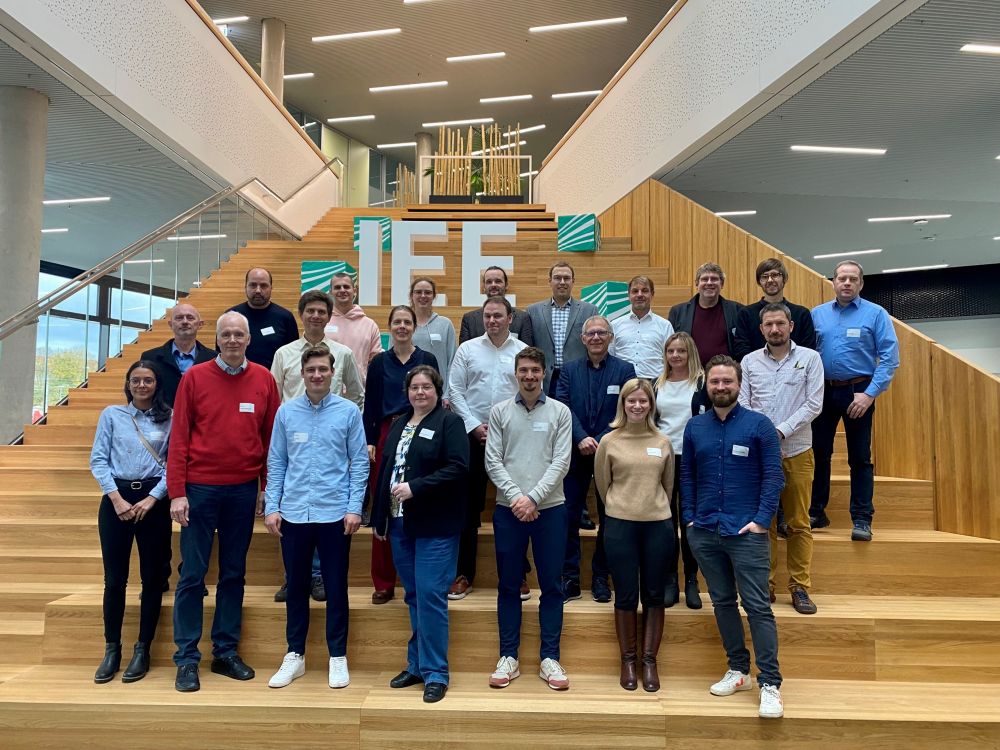News #38
Research on large-scale production of green hydrogen carriers in Chile
Several Fraunhofer institutes and facilities, including the Fraunhofer Institute for Solar Energy Systems ISE and other partners, are working to establish the large-scale production of green hydrogen and its derivatives in Chile. The core of the project, which is funded by the German Federal Ministry of Education and Research (BMBF), is to research the potential for the production of hydrogen and liquid fuels from solar energy. In addition to the technical issues, the project partners are also investigating the economic, logistical, and socio-economic aspects. They are also supporting the installation of a pilot facility for the production of climate-neutral methanol and dimethyl ether in Chile.



With »REPowerEU«, the European Union (EU) has set itself the goal of importing ten million tons of renewable hydrogen by 2030, from neighboring countries as well as from overseas, in order to replace fossil fuels in all sectors in Europe. Chile offers excellent solar potential and stable economic conditions, positioning it as an important contributor to the production of green hydrogen and derivatives — and thus also as a central player in the supply of climate-friendly energy sources to the EU and Germany.
In the overall »Power-to-MEDME« project, the participants want to tap into Chile’s potential for the production of CO2-neutral energy sources. One component is Linde GmbH’s investment project in northern Chile, where it will build a pilot plant to produce green methanol or dimethyl ether (DME) in the megawatt range, depending on the market situation. The carbon dioxide required for this will be supplied by a Chilean cement factory whose CO2 emissions will be captured. Green methanol and DME can be used as fuels for the transportation sector, among other things. Specifically, the project plans to use these fuels to refuel the heavy-duty mining vehicles already on site. The electricity required for the production process will be supplied by a local solar thermal power plant.
In parallel with this and along the entire hydrogen process chain, the participants in the accompanying research project will optimize the production of these Power-to-X products and also evaluate possible local and international sales markets and business models and train local specialists for the construction and operation of production facilities. »The participants in the investment and research project will exchange ideas with each other and thus give a boost to the Chilean hydrogen industry,« states Robert Szolak, head of the »Sustainable Synthesis Products« department at Fraunhofer ISE and one of the project’s initiators. »The planned location is one of the most attractive in the world because it combines exceptional solar radiation conditions with a very well-developed infrastructure, a supplier ecosystem, connections to industrial ports, and one of the world’s largest mining districts for the local use of green hydrogen and its derivatives,« Szolak continues.
In this project, Fraunhofer ISE is working on a new synthesis route for dimethyl ether. »The background to this is that the conventional DME production process is inadequate due to the many process steps and the high external heat requirement,« explains Malte Semmel, a researcher at Fraunhofer ISE. »We have developed a more efficient and compact process for producing renewable DME from hydrogen and CO2 and have demonstrated its feasibility on a laboratory scale.« As part of the project, the process is now to be developed further and set up on a pilot-plant scale.
Fraunhofer ISE will also conduct a site analysis to identify suitable locations for the construction of renewable energy plants and for the development of a large-scale process chain for green hydrogen derivatives. The researchers are also evaluating the use of what is known as Concentrated Solar Power (CSP). They are also carrying out techno-economic analyses, including the calculation of production costs. In a further work package, Fraunhofer ISE is investigating possible pollutant emissions that can arise from the use of DME as a fuel in commercial vehicles and developing strategies and measures to reduce them. In doing so, the researchers are drawing on their experience in setting up and patenting the CatVap® technology developed by Fraunhofer.
This »Power-to-MEDME-FuE« research project is being coordinated by the Fraunhofer Institute for Energy Economics and Energy System Technology IEE. In addition to Fraunhofer ISE and Fraunhofer Chile, the Fraunhofer Institute for Microengineering and Microsystems IMM, the Fraunhofer Institute for Silicate Research ISC, the Fraunhofer-Center for High Temperature Materials and Design HTL, the Fraunhofer Institute for Applied Polymer Research IAP, the Fraunhofer Center for Applied Nanotechnology CAN, the Chair of Thermodynamics of Mobile Energy Conversion Systems at RWTH Aachen University, and the Research Institute for the Economics of Education and Social Affairs FiBS are also involved in the project. The German Federal Ministry of Education and Research is funding the project with over 11 million euros.
- To the project and futher information
- Fraunhofer Chile Research (fraunhofer.cl)
Last modified: